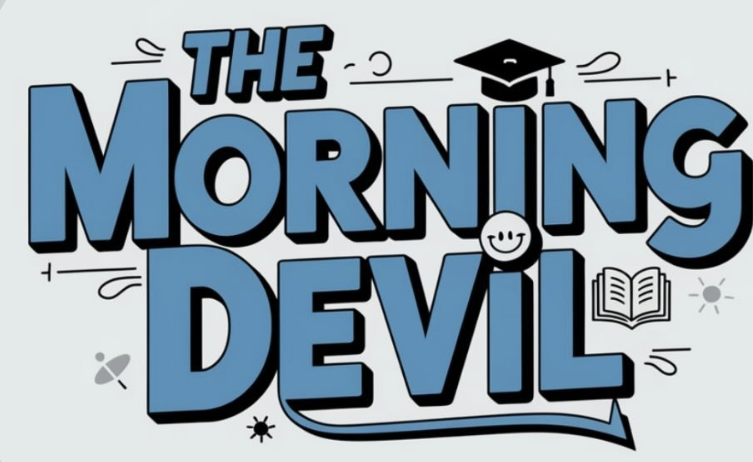On March 20, 2025, President Donald Trump signed an executive order to dismantle the Department of Education. This action comes after his repeatedly expressed intentions to “close the Department of Education and move education back to the states where it belongs,” according to the Official White House Website. The Department of Education (DOE) is the federal agency which plays a key role in education by establishing policy and administering funding for many American schools.
Starting this winter, Trump has worked to abolish it in several ways. In February, PBS reported that the Department of Government Efficiency (DOGE) cut over $900 million in DOE funding. Then, according to ABC News, Trump laid off nearly 50 percent of the DOE’s workforce in March. Just over a week later, he then signed Executive Order 14242: “Improving Education Outcomes by Empowering Parents, States, and Communities,” to shut down the DOE entirely. If this happens, critical education programs will lose funding, impacting schools both institutionally and communally.
What does the DOE do?
When the DOE was established in 1979, its purpose was to provide equitable education to all Americans. According to the Economic Policy Institute, one of the ways the DOE currently does this is by mandating that states allot some of their federal funding to programs which help marginalized communities. One of these programs is Title I, which was established in 1965 to ensure that low-income public school families receive a high-quality education. According to The City, a non-profit newsroom reporting on New York City, other programs include the Individuals With Disabilities Education Act, several meal programs, and grant programs for low-income undergraduate students.
Another function of the DOE is to enforce federal laws against discrimination on the basis of identity through its Office of Civil Rights. This office allows people to file complaints digitally if any entity funded by the DOE, which can include a health care provider, school, or other government agency, violates one’s civil rights. According to the Official DOE Website, if a violation has occurred, both parties will have to sign a resolutional agreement which “will remedy the identified violation(s) in compliance with applicable civil rights law(s).” This ensures that all students and staff have a safe educational environment.
Why is the White House trying to dismantle the DOE?
Trump’s desire to close the agency comes after decades of Republicans trying to do so, according to BBC news. To justify the dismantling, Trump has argued that the DOE is pushing “woke” agenda onto schools through programing such as DEI initiatives which he believes are “radical and wasteful,” according to the Official White House Website. As such, Trump’s “order also mandated that any program that receives funds from the Department of Education must end any focus on diversity, equity or inclusion, as a condition of receiving the federal funds,” according to the Economic Policy Institute.
Additionally, the Official White House Website announced that the aim of the DOE defunding is to “return authority to the states,” despite the Official DOE Website sharing that states already have the authority to determine curriculum and graduation requirements.
What would happen if the DOE is shut down?
The City reports that if the DOE is to be abolished, funding for Title I and the other aforementioned grant programs would be slashed, severely harming already marginalized communities. Moreover, states would no longer be mandated to allocate any of their remaining funds towards the aforementioned programs, as it was the DOE who oversaw funding distribution. As Public School Teacher Zeph Capo expressed in an interview with Newsweek, this could manifest in “funding that paid for teachers’ assistants that…work with special education students [being] moved to do bus duty.”
Additionally, if the DOE is abolished, the Office of Civil Rights is predicted to move from under the DOE to the Department of Justice. “This would require parents to have the resources to pursue litigation to resolve any complaints,” said Senior Director of K-12 Education Policy for the Center for American Progress Weade James in an article for US News. “That will create a lot more challenges for families to address civil rights disputes.”
How would independent schools like Poly be affected?
The DOE also plays a critical role in many independent schools. Beyond the Office of Civil Rights being a resource for all Americans who have access to education, many of the federally funded meal programs managed by the NYC DOE are also used by independent schoolers. These include the National School Lunch Program, School Breakfast Program and Summer Food Service Program, according to The City.
The defunding may also increase the costs of private schooling while decreasing their diversity. While not officially related, Trump has proposed a five billion dollar increase in private school vouchers shortly after the DOE defunding, which would provide families with some money to attend a private school of their choice. Although some Republicans claim that these vouchers would allow more students to receive a private education, critics assert that they empirically detract from public school funding to end up aiding the wealthy. “Funding formulas for public schools are predominantly based on enrollment numbers,” reports NBC News. “So, as students flee public school…overall funding decreases.” Ed Trust continues that vouchers often exclude minorities, go towards the white and wealthy and raise tuition costs, exacerbating educational inequities.
Additionally, in a recent Polygon article, Head of Upper School Sarah Bates shared that while “Most independent schools do not receive federal funding, we do receive a small amount from New York State each year.” In an interview with the Polygon, Assistant Head of School, Academics Michal Hershkovitz shared that if “all funding [becomes] state funding, there will be states who suffer significantly more” since “the federal government, because of its revenue stream…can raise far more [money].” Therefore, if the DOE is dismantled, independent school funding could drastically vary depending on the state, causing divides in education accessibility.
However, Hershkovitz maintains that the system is complex and outcomes are unpredictable for both public and independent schools. “I don’t know what to expect if public school funding is defunded,” she said. “I do know that public schooling has had a very, very important role to play in American democracy,” and that “it’s much too simplistic to point to a system as complex as public schooling and say, ‘this is broken.’ I’m wondering, is this the right way [to fix it]?”
What’s the status of the dismantling?
The DOE has not yet been dismantled given that a majority vote from Congress and supermajority from the Senate is required to enact the dismantling. BBC describes this as “a political longshot” given that the Senate “would need at least seven Democrats to vote to abolish the agency” in order to have the 60 of 100 members necessary to have a supermajority.
Moreover, even if the DOE is dismantled, Trump announced that the department’s “core necessities” would still be maintained. The White House via AP News stated that this entails “preserving its responsibilities for Title I funding for low-income schools, Pell grants, and money for children with disabilities.”
However, the funding cuts which already happened have made severe impacts on these programs already. According to the Kentucky Center for Economic Policy, the $900 million DOGE cut in February severely impacted the Institute of Education Sciences (IES), causing 90 percent of its staff to be laid off. As the research branch of the DOE, the IES collects data on school demographics and learning rates, which is critical in determining where funding should be allocated in order for educational programs to function in the most efficient, effective, and equitable way. Therefore, without funding, the IES and the functional school system it creates has dwindled in efficiency, having long term implications for educational accessibility.
Moreover, with recent funding cuts, the White House’s desire to maintain the DOE’s “core necessities” might not be possible. AP News continued that “the Education Department [no longer] has the staff to oversee its $1.6 trillion loan portfolio,” which is necessary to properly fund the grant programs it promised to.


























